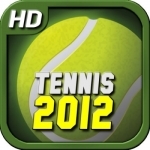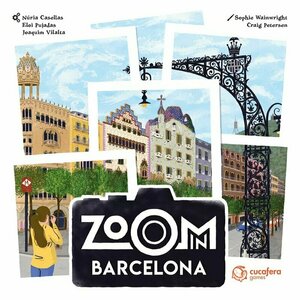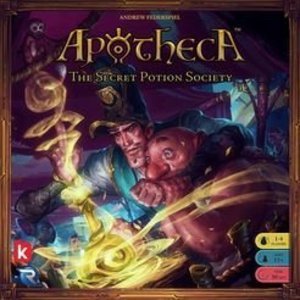
SkySafari 4 Plus: Map the Universe! Discover Sun, Moon, Mars, Stars, Planets, and Satellites with your telescope and NASA space missions!
Reference and Education
App
***SkySafari has been upgraded! For more information on the NEW SkySafari 5 Plus for iOS, visit...

Living with Lynching: African American Lynching Plays, Performance, and Citizenship, 1890-1930
Book
Living with Lynching: African American Lynching Plays, Performance, and Citizenship, 1890-1930...
Purple Phoenix Games (2266 KP) rated Zoom in Barcelona in Tabletop Games
Jan 5, 2022
In Zoom in Barcelona, players are photographers competing in a local photography contest. Judges will dictate the preferred sites, and the contest will have an over-arching theme, while players also race to take shots at the most opportune moment with the sunlight over the city. There are multiple ways to score points, and collecting a diverse portfolio of shots from the day will win a prize for the best photographer!
DISCLAIMER: We were provided a copy of this game for the purposes of this review. This is a retail copy of the game, so what you see in these photos is exactly what would be received in your box. I do not intend to cover every single rule included in the rulebook, but will describe the overall game flow and major rule set so that our readers may get a sense of how the game plays. For more in depth rules, you may purchase a copy online or from your FLGS. -T
To setup, follow the instructions in the rulebook; there are just too many to list here. However, the starting state of the board should look something similar to the photo below. The major components are the board, the Landmark photo cards, the Transport cards, Natural Light track, Themes tokens, and of course: the Dragon token.
NOTE: This review includes all rules found in the rulebook. For lighter games, players may omit certain rule options.
Turns are very simple in Zoom in Barcelona and consist of two phases – Move and Perform One Action. Players may move up to two connected spaces by walking, or more spaces by playing and discarding one of their Transport cards (shown above in hand). Players will be moving around the board like crazy attempting to arrive at certain locations so that they may take one action from the following: take one photo, visit an Information Point, or take the Metro.
Should the active player choose to take one photo, they must be currently at a location that matches one of the Landmark cards currently residing in the Judges’ Picks area (northeast corner of the board). To take a photo here, the player simply collects the card from the board and replaces it with another from the deck. Collecting Judges’ Picks cards is nice, but if players neglect to advance themselves along the Natural Light Track (southeast corner of the board), these cards will not score. Players will need to take photos at the leftmost location to be able to score two Landmark cards, with each subsequent Natural Light card allowing an additional two cards to be scored, up to a maximum of eight total cards scored. Players may also take photos of portions of the Barcelona Skyline by arriving at the corresponding Skyline Viewpoint spots on the board and collecting the token present (in a two player game, there is only one token at each spot, so the race is on!). These Skyline tokens can be combined at the end of the game for bonus points if combined in a specific order per the individual City Skyline Tokens dealt at the beginning of the game. Finally, players may take a photo of the Dragon in its current Lair by arriving on the Dragon’s location and choosing this action. By taking its photo, the Dragon allows players to freely take one of the Judges’ Picks Landmark cards from those on display, collect any Skyline building token from the board, advance the player’s token on the Natural Light Tracker, OR refresh all the Landmark cards on the Judges’ Pick area. In all of my plays, I abuse the Dragon to advance my token on the Natural Light Track primarily.
The player may instead visit an Information Point on the board in order to draw more or completely refresh their hand of Transport cards. Perhaps the player has a value 3 card, discards it, and draws three more cards offering higher value transports.
Finally, a player may instead choose to Take the Metro by visiting a red M spot and virtually teleporting to any other red M Metro spot on the board. This makes for quick travel across the city.
Play continues in this fashion until one player collects their eighth Landmark photo. The game then immediately ends and scores are counted per the rulebook. The photographer with the highest score wins the competition!
Components. This game has a lot of different types of components; the box is stuffed! All of the cards are nice, the cardboard components are great, and the wooden tokens are just okay. I would prefer more custom wooden components, as the game ships with just entry level pawn tokens and matching colored cubes. Something a bit more jazzed up would be appreciated here. Otherwise, the art is wonderful, the board is beautiful, and everything just looks really interesting when all setup. Per usual, Blue Orange has given us a beautiful game. (*Just bling out the wooden bits in your copy – I plan to with mine)
So wow, there are so many choices to be made in this game. Firstly, it’s a mad dash to collect that eighth Landmark card, but you just can’t ignore the Natural Light Track (if you play with it), because having eight cards but only able to score two or four is just like shooting yourself in the foot for no good reason. Zooming around town (I know, I had to) is so satisfying, like a board game treasure hunt, and snapping all these photos of memorable places just hits the spot for me. Yes, I am probably biased because of the setting and my fondness for it, but even if this were set in another location where I had no experience, I would still very much enjoy it.
I’ll tell you one thing. I feel bad every time I play this because I feel like a lazy one-trick pony chasing around the Dragon to exploit its power, and MAYBE grabbing a shot along the way. The Dragon is very powerful and allows players to do really helpful things throughout.
Yes, there are some minor rules I left out, but I think you all get the idea behind this game. I am absolutely in love with this one, and I am so glad it was suggested to me to try, and even more lucky that Blue Orange sent me a copy to review! Officially, Purple Phoenix Games gives this one a 5 / 6 for its beauty, fun mechanics, and incredible array of choices to be made along the way. I can see this one inching its way toward my Top 10 Games of All Time, but I suppose time will tell. If you are a fan of ours, and your tastes typically line up with mine, then please do yourself a solid and grab a copy of this one right away. It may be daunting to learn at first, but once it all clicks, I can guarantee you will see the cohesiveness and beauty of Zoom in Barcelona.
Oh, and if anyone finds my debit card, please return it. I “lost” it there in the Summer of 2000. Thanks.

Taichi Panda 3: Dragon Hunter
Games
App
Before the world was populated with taichi masters, there existed two dragons borne from the sun and...
Purple Phoenix Games (2266 KP) rated Apotheca in Tabletop Games
Jun 12, 2019
After years of study, you have finally become a master apothecary, and making magic potions is your passion. You buy all of your ingredients in a secret marketplace with no problem until one day, you come across another apothecary trying to buy all of the same ingredients as you! Who does this person think they are?? Using your quick wit, and some sleight of hand, you manage to scatter the ingredients around the marketplace to hide them from your rival. Now all you’ve got to do is give them the slip so you can go pick up the ingredients. Be careful, though – you’re rival is as sly as you are, and is scouring the marketplace to find them first!
In Apotheca, players are racing to create three magic potions before their opponents do. To craft a magic potion, players must make a match of three potions of the same color in a row. Played on a 4×4 grid, potions are manipulated by apothecary powers from recruited apothecary cards in a manner similar to movement in chess, or better yet – Onitama. Complete three matches, and you win! As a whole, I could describe Apotheca as chess with a helping of tic-tac-toe.
One thing I really like about this game is that it’s a game of semi-hidden information. Some things are hidden and some things are not. You do know the apothecary power(s) your opponent has, but you don’t know the color of the potions they put into play. Based on how they use their powers to manipulate potions, both face-up and face-down, you must deduce their strategy and thwart their attempts at making a match! Of course, they are doing the exact same thing to you – only you know the color of potions you place, but your power is known to your opponent. It’s a unique game of deduction and deception that requires more strategy than meets the eye.
Apotheca can be played with 1-4 players, but I think the best player count is 2. In a 3-4 player game, it can be difficult to build a concrete strategy because the board can significantly change between your turns. In a 2-player game, the board changes as well, but not nearly as quickly since it is just a back-and-forth with turn order. Also, more players means more hidden information – it can be tedious trying to remember who performed what action and who has what powers as you try to deduce everyone’s strategy. I don’t mind Apotheca as a 3-4 player game, but I would certainly prefer to play it as a 2-player game.
As you can see by our individual ratings, we are a little split on this game. It requires a decent amount of strategy and deduction, which work well together in this game. Apotheca was one of the first games in my collection, and it’s one that will stay there. Overall, Purple Phoenix Games gives Apotheca a sneaky 12 / 18.
https://purplephoenixgames.wordpress.com/2019/02/01/apotheca-review/

Hustle Sports Training Drills
Sports and Health & Fitness
App
Hustle offers basketball instruction from expert coaches and trainers. Whether you're looking for...

TouchSports Tennis 2012 HD
Sports and Games
App
** New for the 2012 Pro Tennis Season ** Do like tennis? We have a HD App for that! Enjoy the...

